
Jokull
Scope & Guideline
Advancing Glaciological Insights
Introduction
Aims and Scopes
- Glaciological Research:
The journal emphasizes the study of glaciers, including their dynamics, mass balance, and changes over time, particularly in Iceland. This focus includes historical and contemporary analyses of glacial movements and their implications. - Volcanology and Glacier Interactions:
Research published in 'Jokull' often explores the interactions between volcanic activity and glacial environments, detailing phenomena such as jökulhlaups (glacial outburst floods) and their geomorphological effects. - Monitoring and Remote Sensing:
The journal includes studies employing advanced monitoring techniques, such as satellite radar imagery, to assess ice dynamics and changes in glacier mass and morphology. - Historical and Cultural Perspectives:
In addition to scientific research, 'Jokull' provides insights into historical glaciological studies and the contributions of notable figures in Icelandic glaciology, fostering a broader understanding of the field's development. - Community and Institutional Reports:
The journal publishes reports from various Icelandic geological and glaciological societies, highlighting collaborative research efforts and institutional activities related to glacier studies.
Trending and Emerging
- Impact of Climate Change on Glaciers:
There is a growing focus on how climate change affects glacier dynamics, with recent studies emphasizing the monitoring of glacier retreat and mass loss as critical areas of research. - Advanced Monitoring Techniques:
The use of satellite technology and remote sensing to monitor glacial changes has gained traction, highlighting the journal's commitment to integrating modern methodologies in glaciological research. - Interdisciplinary Approaches to Geosciences:
Emerging trends show an increased collaboration between glaciology, volcanology, and geomorphology, indicating a holistic approach to understanding the complexities of Iceland's geological landscape. - Community Engagement and Outreach:
Research emphasizing the role of local communities in glacier monitoring and awareness has started to surface, reflecting a trend towards public engagement in scientific research.
Declining or Waning
- Historical Data Analysis:
Although historical glacier changes were previously a focus, there has been a noticeable decline in studies revisiting past glacier variations, suggesting a shift towards more contemporary analyses and real-time monitoring. - Non-Glaciological Geological Studies:
Papers focusing on geological aspects unrelated to glaciers, such as general geological surveys or unrelated volcanic studies, have become less frequent, indicating a possible narrowing of the journal's thematic focus. - Cultural and Societal Reflections:
While earlier publications included reflections on the cultural significance of glaciers and historical events, this theme has waned, possibly overshadowed by the demand for more scientifically rigorous studies.
Similar Journals
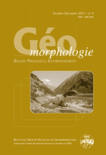
Geomorphologie-Relief Processus Environnement
Advancing Insights into Relief and EnvironmentGeomorphologie-Relief Processus Environnement is a pivotal journal in the field of Earth-Surface Processes, published by the GROUPE FRANCIAS GEOMORPHOLOGIE in France. With an ISSN of 1266-5304 and E-ISSN 1957-777X, the journal has established a notable presence since its inception in 1995. Though it operates without Open Access, it remains an essential resource, particularly in the niche area of geomorphology where it offers valuable insights into the interactions between relief features and environmental processes. The journal achieved a Q3 ranking in 2023 among Earth-Surface Processes, attesting to its significance in advancing research and discussions within this discipline, while it ranks #113/179 in Scopus, placing it in the 37th percentile. By fostering interdisciplinary dialogue and disseminating high-quality research, Geomorphologie-Relief Processus Environnement serves as a vital platform for researchers, professionals, and students eager to explore the complexities of our planet's surface processes.
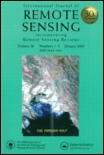
INTERNATIONAL JOURNAL OF REMOTE SENSING
Exploring the Frontiers of Earth ObservationInternational Journal of Remote Sensing, published by Taylor & Francis Ltd, stands at the forefront of Earth and Planetary Sciences, providing a critical platform for disseminating pioneering research since its inception in 1980. With an impressive ranking of #25 out of 195 in general Earth and Planetary Sciences and a notable 87th percentile on Scopus, this journal is recognized for its high-quality contributions that span diverse topics including satellite imagery analysis, geospatial technologies, and environmental monitoring. As a Q1 journal in its field for 2023, it offers invaluable insights and methodologies that are essential for researchers, professionals, and students alike. Although not Open Access, the journal facilitates a comprehensive understanding of remote sensing sciences, ensuring that the scholarly community remains updated with the latest advancements, trends, and applications that impact global challenges.
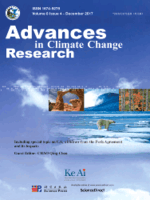
Advances in Climate Change Research
Connecting Researchers to Tackle Climate ChallengesAdvances in Climate Change Research is a premier open-access journal dedicated to advancing the understanding of climate change and its wide-ranging impacts on our planet. Published by KEAI PUBLISHING LTD since 2010, it has established itself as a leading forum for research in Atmospheric Science, Global and Planetary Change, and Environmental Management, achieving a notable Q1 ranking across these categories as of 2023. The journal, which operates out of Beijing, China, ensures that researchers, professionals, and students have unrestricted access to cutting-edge studies, enhancing global knowledge on climate change mitigation and policy development. With impressive Scopus rankings, including 11th out of 148 in Atmospheric Science, it represents a vital resource for those seeking to contribute to climate science and its applications. By submitting your work to this influential journal, you join a global community committed to addressing one of the most pressing challenges of our time.
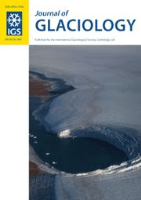
JOURNAL OF GLACIOLOGY
Illuminating the science behind glacial change and environmental impact.JOURNAL OF GLACIOLOGY, published by Cambridge University Press, is a leading open-access journal dedicated to advancing the scientific study of glaciers and ice sheets, with a particular focus on their interactions within Earth’s systems. With an ISSN of 0022-1430 and E-ISSN of 1727-5652, this journal has established itself as an influential platform since its inception, currently ranked in the Q1 category of Earth-Surface Processes in 2023. The journal is based in the United Kingdom and has witnessed a convergence of pivotal research from various periods spanning from 1977 through to 2024. It enjoys a commendable Scopus rank of #29 out of 179 in Earth and Planetary Sciences, affirming its impact with an impressive 84th percentile. The open-access model adopted since 2016 enhances its accessibility, enabling a wider audience of researchers, students, and professionals to engage with high-quality research on glaciology, climate change, and environmental systems. By fostering interdisciplinary dialogue and disseminating innovative findings, the JOURNAL OF GLACIOLOGY plays a crucial role in enhancing our understanding of glacial dynamics and their significance in our rapidly changing world.
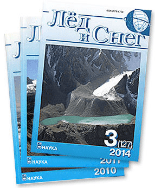
Led i Sneg-Ice and Snow
Fostering collaboration in the study of Earth's climatic challenges.Led i Sneg-Ice and Snow is a distinguished academic journal dedicated to advancing research in the fields of Earth-surface processes, geochemistry, petrology, and water science. Published by the Institute of Geography, Russian Academy of Sciences, this journal has embraced Open Access since 2015, ensuring that valuable scientific findings are accessible to researchers and professionals globally. With an ISSN of 2076-6734 and an E-ISSN of 2412-3765, the journal has made significant contributions within its converged years, spanning from 2017 to 2024. Notably, it holds a respectable position in various Scopus ranks, showcasing its impact, including a Q2 category in Earth-Surface Processes for 2023, indicating its relevance and importance in the scientific community. As a key resource for those studying Earth's climatic changes and environmental challenges, Led i Sneg-Ice and Snow serves as a vital platform for disseminating innovative research and fostering collaboration among academics, professionals, and students in the environmental sciences.

Remote Sensing in Ecology and Conservation
Leading the way in ecological research with remote sensing innovations.Remote Sensing in Ecology and Conservation is a pioneering journal published by WILEY that has been a beacon of open-access research since 2015. With an E-ISSN of 2056-3485, this journal stands at the forefront of the intersection between ecological research and technological innovation. It is recognized for its significant impact, boasting Q1 rankings across several prestigious categories in 2023, including Computers in Earth Sciences and Ecology, emphasizing its commitment to high-quality, influential scholarship. The journal provides a platform for researchers and practitioners to share their findings in remote sensing applications that advance ecological conservation efforts. Encompassing a broad scope that includes studies on landscape changes, biodiversity assessments, and environmental monitoring, it serves as an essential resource for education and practice in the field. With impressive ranks in Scopus, including a remarkable 6th place in Earth and Planetary Sciences, it continues to shape the dialogue in ecology and conservation. As an open-access journal, it champions the dissemination of knowledge, making critical research accessible to a global audience, thereby fostering innovation and collaboration in the pursuit of sustainable environmental practices.

Geographia Technica
Pioneering Insights into Socio-Environmental InteractionsGeographia Technica is an esteemed academic journal published by GEOGRAPHIA TECHNICA ASSOCIATION - GT Assoc in Romania, serving as a vital platform for the dissemination of cutting-edge research in the interdisciplinary fields of geography, planning, and earth sciences. Since its inception in 2009 and continuing through to 2024, the journal has established itself as a respected source of knowledge, reflected in its classification within the Q3 category across significant fields such as Computers in Earth Sciences, Earth-Surface Processes, and Geography, Planning and Development. With the ambition to enhance the understanding of socio-environmental interactions and technological applications in these areas, Geographia Technica invites scholars and practitioners to contribute original research that pushes the boundaries of current knowledge. Although currently not listed as open access, the journal's engaging content ensures it remains a valuable resource for researchers, professionals, and students keen on advancing their expertise in these dynamic disciplines.

Morphology
Shaping the Future of Morphological ResearchMorphology is a leading academic journal published by Springer, dedicated to the field of linguistics and language, with an impressive 2023 Category Quartile of Q1 reflecting its high impact and quality. Established in 2006, this international journal presents cutting-edge research and advancements in morphological studies, providing a vital platform for scholars and practitioners to disseminate their findings and insights. With its Scopus rank placing it in the top 10% of journals in the Arts and Humanities (Language and Linguistics), Morphology plays a pivotal role in shaping the discourse within the field. The journal maintains a commitment to excellence and rigor, catering to a wide readership that includes researchers, professionals, and graduate students eager to explore the complexities of language structure. Although currently not open access, Morphology ensures that its content is accessible through various institutional subscriptions, facilitating widespread engagement with important linguistic research.

Revista Brasileira de Geomorfologia
Advancing Knowledge in Geomorphological TransformationsRevista Brasileira de Geomorfologia is a prominent open-access journal dedicated to the field of geomorphology, fostered by the UNIAO GEOMORFOLOGIA BRASILEIRA since its inception in 2000. Based in Brazil, this journal serves as a vital platform for researchers, professionals, and students to disseminate and engage with cutting-edge research on the dynamic processes shaping the Earth's surface. With an ISSN of 1519-1540 and an E-ISSN of 2236-5664, it has earned its place within the academic community, ranking in the Q3 category in the Earth-Surface Processes domain according to the latest 2023 quartiles. The journal's metrics, including a Scopus rank of 123/179 within its category, reflect its commitment to quality research. By facilitating open access to its content, the Revista Brasileira de Geomorfologia not only promotes scholarly communication but also enhances the visibility of vital studies detrimental to understanding geomorphological transformations and environmental change. Join the ongoing discourse and contribute to advancing knowledge in this essential field of Earth sciences.
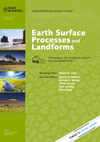
EARTH SURFACE PROCESSES AND LANDFORMS
Advancing Knowledge in Earth’s Dynamic LandscapesEARTH SURFACE PROCESSES AND LANDFORMS is a renowned academic journal dedicated to the comprehensive exploration of dynamic processes shaping the Earth's surface. Published by Wiley, this esteemed journal has established itself as a leading platform in the fields of Earth and Planetary Sciences, Geography, Planning, and Development. With an impressive Impact Factor and ranked in the Q1 category for multiple disciplines, it consistently features cutting-edge research that contributes to the understanding of geomorphology, hydrology, and related environmental phenomena. Researchers and professionals can benefit from the journal's extensive repository of high-quality studies, making it a crucial resource for advancing knowledge in these vital areas. As it continues to converge from 1981 to 2024, EARTH SURFACE PROCESSES AND LANDFORMS remains pivotal for scholars aiming to engage in high-level discourse and discovery in Earth sciences.